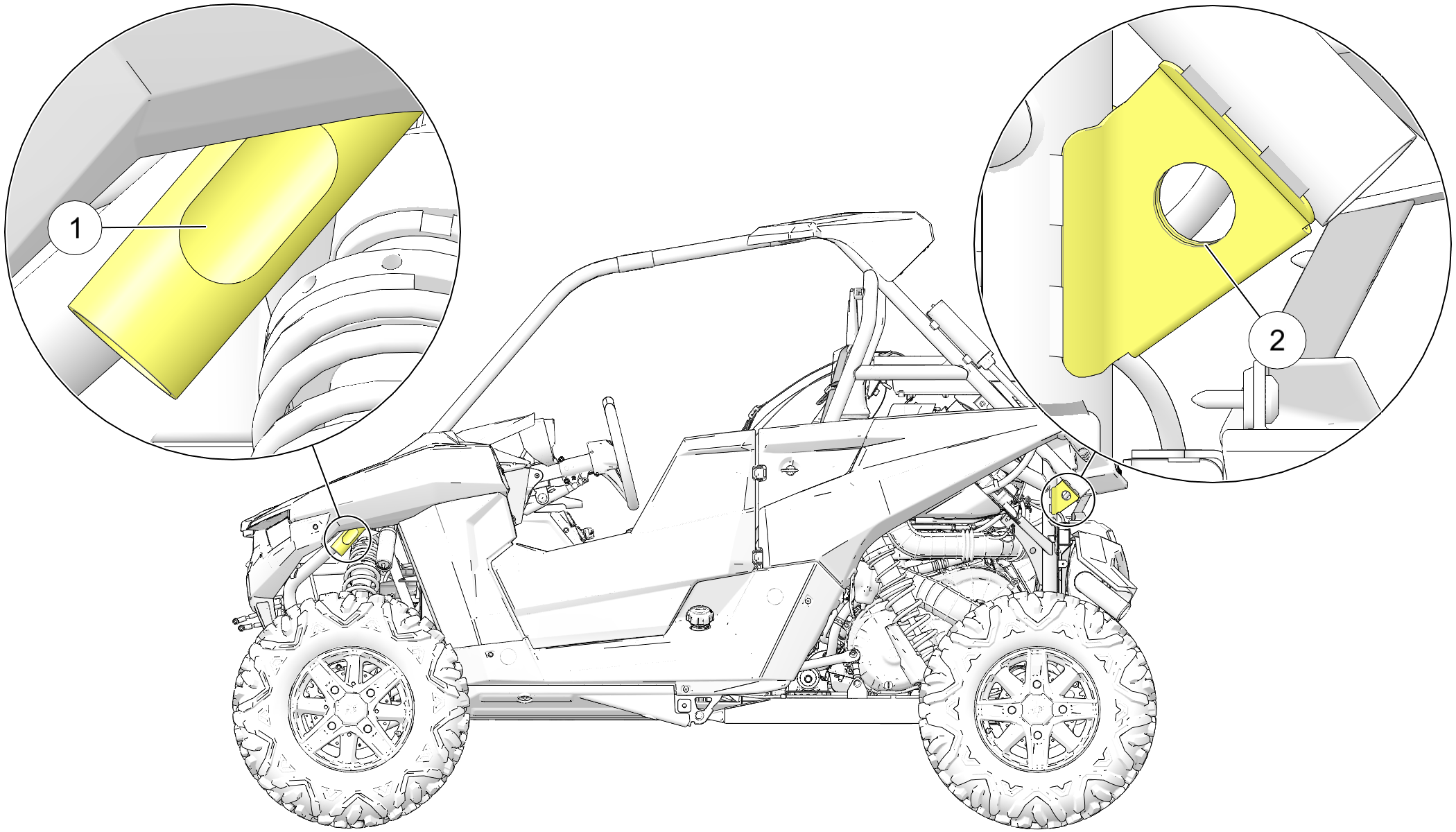Keeping your POLARIS
vehicle clean will not only improve its appearance but it can also
extend the life of various components.
| NOTICE |
| Water in the PVT system could cause the drive belt to become wet
and slip in the clutches. Always avoid spraying water directly
toward any intake pre-filters.High
water pressure may damage radiator fins and impair a radiator’s effectiveness.
High pressure
may also damage other vehicle
components.Certain products, including insect repellents and chemicals,
will damage plastic
surfaces. Do not allow these
types of products to contact the vehicle. |
The best and safest
way to clean your POLARIS vehicle is with a garden hose and a pail
of mild soap and water.
- Use a professional-type
washing cloth, cleaning the upper body first and the lower parts last.
- Rinse with clean
water frequently.
- Dry surfaces with
a chamois to prevent water spots.
If a high pressure
water system is used for cleaning (not recommended), exercise extreme
caution. The water may damage components
and could remove paint and labels. Avoid directing
the water stream at the following items:
- Wheel bearings
- Radiator
- Transmission seals
- Brakes
- Cab and body panels
- Labels and decals
- Electrical components
and wiring
- Air intake components
If warning and
safety labels are damaged, contact your POLARIS dealer for free replacement.
Grease all zerk
fittings immediately after washing. Allow the engine to run for a
while to evaporate any water that may have
entered the engine or exhaust system.
Washing Tips
- Avoid the use of
harsh cleaners, which can scratch the finish.
- Do not use a power
washer to clean the vehicle.
- Do not use medium
to heavy duty compounds on the finish.
- Always use clean
cloths and pads for cleaning and polishing. Old or reused cloths and
pads may contain dirt particles that
will scratch the finish.

